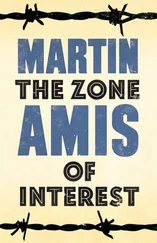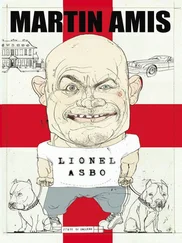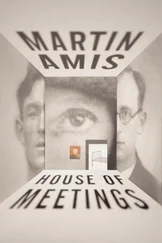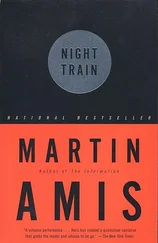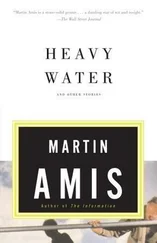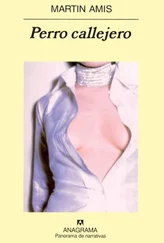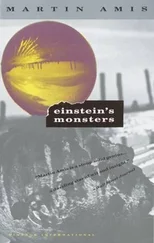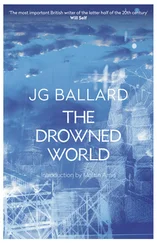Old comrades from the days of Tsaritsyn (later Stalingrad; later still, Volgograd): the feral factotum Mekhlis, the ex-tailor Shchadenko, the Quasimodolike Kulik, and the tirelessly incompetent Voroshilov. In Teheran in 1943, when Churchill, in an atmosphere of historic emotion, presented Stalin (‘by order of the King’) with the Sword of Stalingrad, Voroshilov succeeded in dropping it as he solemnly bore it from the room.
Men of other ranks would be aware that their families would be ‘denied state assistance’: i.e., ration cards, medical treatment, and the right to vote (this last a ‘platonic’ deprivation, according to Moshe Lewin).
Trotsky hung on until the following day. As he lay dying in the hospital he had a strange visitor: the twenty-five-year-old Saul Bellow (who remembers the stain of blood and iodine on Trotsky’s short grey beard). The living Trotsky is evoked in Bellow’s novel The Adventures of Augie March (1953); in a book full of extraordinary passages, this is a superextraordinary passage, and powerfully romantic, embodying all the intensity of hope that our artists and thinkers directed towards 1917… When Ramón Mercader was released from prison and journeyed to Moscow in the 1960s, he formally inherited the award that had been been granted (by Stalin) to his mother. It was, of all things, the Order of Lenin.
For a time Stalin’s chief longevity coach was Dr Alexander Bogomolets, who claimed that he (Stalin) might live to be 150 (he would now be 122). Dr Bogomolets died of natural causes at the age of sixty-five.
When Khrushchev passed on Stalin’s remark in his Secret Speech of 1956, the assembled delegates of the Twentieth Party Congress reacted with wild laughter. It takes a beat or two before one can see why Bolsheviks should find this funny. Were they amused by the elephantiasis and demented circumspection of Stalin’s paranoia? Partly, perhaps. More likely, though, the laughter was an expression of moral aftershock, and an expression of sheer relief that such enormities were now in the past. They laughed because they could laugh. But the sound of that laughter, one imagines, remained disturbingly confused.
By 1944 the trucks used for the deportations included many Studebakers, donated (not for this purpose) by the Americans as part of the Lend-Lease aid programme.
Hitler planned to turn Russia into a ‘slave empire’. This does sound delusional. But then it occurs to you that a slave empire is what they had there already.
Antony Beevor: Stalingrad .
And Stalin’s wartime pleasures were savage. In early 1944, while clearing the southern front, General Ivan Konev ambushed 30,000 German troops retreating in open terrain. After thorough work by the Russian tanks and artillery, a Cossack cavalry unit effected the kind of slaughter (as one witness said) ‘that nothing could stop until it was over’. Subsequently there was no Churchillian talk, from the Kremlin, about the inevitable moral rot of warfare. ‘Stalin was reported to be delighted with the massacre’ (Overy), and Konev was made a marshal.
Stalin was much perplexed, here, by the mysteries of democracy.
With 25 million dead, and another 25 million homeless, with the loss of 70,000 villages, 1,700 towns, 32,000 factories, and a third of the national wealth, with ‘banditism’ (armed insurrection) down the length of the western border (guerrilla warfare would continue into the 1950s), and a serious though unacknowledged famine, the USSR, in 1945, was thrown back through time. The next lumbering Five Year Plan, drafted in that year, had in effect the same object as the first, industrialization, and made the usual demands for sacrifice, discipline and vigilance. This would have been congenial to Stalin – to his nostalgia for struggle.
On the other hand, one should not forget that support for Hitler was broad-based, and that Nazism had many distinguished admirers (among them Martin Heidegger and two Nobel Laureates in physics).
‘It was in the twelfth century,’ Cohn writes, ‘that [the Jews] were first accused of murdering Christian children, of torturing the consecrated wafer, and of poisoning the wells. It is true that popes and bishops frequently and emphatically condemned these fabrications; but the lower clergy continued to propagate them, and in the end they came to be generally believed.’ As in his other classic work, The Pursuit of the Millennium , Cohn identifies the semieducated clerisy as the natural constituency for militant utopians as well as anti-Semites – a constituency that Stalin (or Stalin’s mother) once hoped he would join. It was also Chernyshevsky’s.
As part of an effort to improve the birth rate, German women, on each parturition, were awarded a crucifix tastelessly called the Mutterkreuz . Aryan households, at this time, were forbidden to employ any Jewess under the age of forty-five. No Mutterkreuz for her .
Right up until 1989 the Auschwitz Museum itself was a monument to Holocaust denial. The part played by the Jews was deemphasized in favour of the Struggle Against Fascism. Similarly: ‘The report produced in Kiev on Babi Yar talked of the death of “peaceful Soviet citizens”, not of Jews’ (Overy).
It was only after his suicide that Mayakovsky’s work ‘began to be introduced forcibly, like potatoes under Catherine the Great,’ noted Pasternak: ‘This was his second death.’ Pasternak survived, without compromise. His lover, Olga Ivinskaya, was interrogated and sent to the gulag. The child she was carrying was stillborn in jail.
The Bolsheviks persisted with this outfit long after taking power. The squeak-and-glisten look, it seems, was admired by all the putschists of the first half of the twentieth century.
This is Lenin’s thumbnail sketch of the Red Terror. Again, for perspective (and this applies to the years 1917–24): ‘it is possible that more people were murdered by the Cheka than died in the battles of the civil war’ (Figes).
This letter of Lenin’s has an equivalent in the Stalin archive: the one to Mikhail Sholokhov (who, according to Solzhenitsyn, didn’t write And Quiet Flows the Don ) about the peasantry. In rather more languid tones, Stalin assures his ‘esteemed’ comrade that the ‘worthy reapers’, whom he had only minimally inconvenienced, were not as worthy as they seemed: they were using terrorism to starve the towns.
Other things were named after Gorky – a weaving factory, for instance, and an airplane (the world’s largest), which crashed. Solzhenitsyn, who is maximally hard on Maxim, eagerly reports that camps were named after him too – posthumously, no doubt. One of Stalin’s rare jokes.
The boy told him, inter alia, about the ‘mosquito treatment’: these insects, like airborne piranha, could turn a man into a skeleton within hours. Prisoners were also strapped to logs and then bounced down the stone steps of the fortress.
Not deep enough. Solzhenitsyn visited the site many years later. He was there all day, and saw two barges.
Читать дальше

